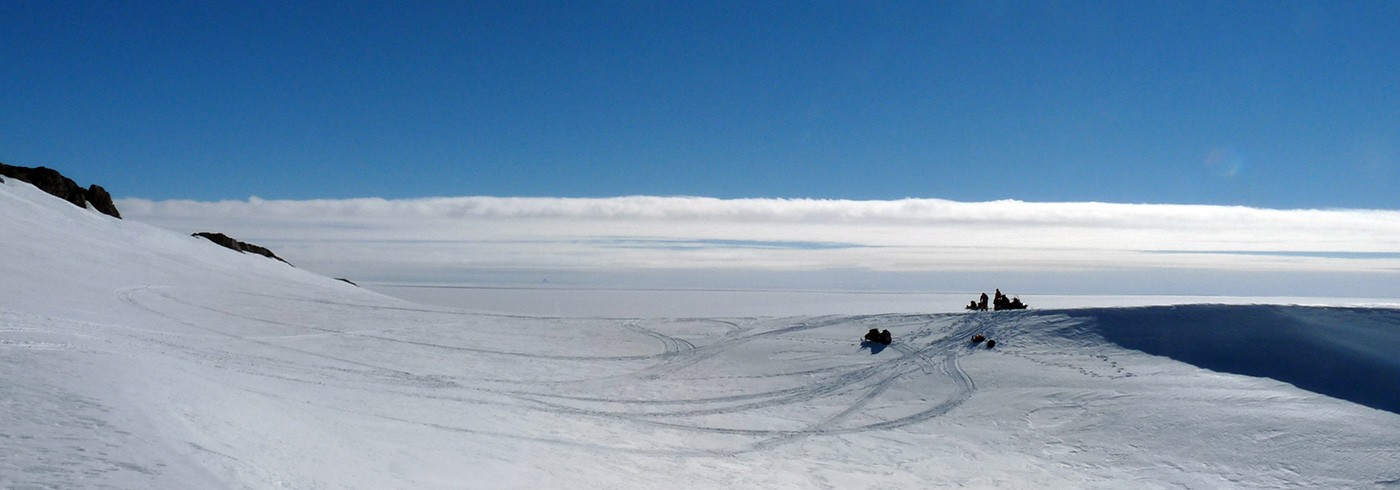
Outside SANAE IV. Photo: Jon Harbor

At each nunatak site we spent time looking for evidence that the ice sheet had formerly been thicker and covering the rock. Here we have a fresh sample in the bag. Photo: Jon Harbor

On the ridge on one of the two nunataks we visited during New Year’s Eve and New Year’s Day. Photo: Jon Harbor

Field conditions were cold and windy, but with several layers of good outdoor clothing we stayed pretty warm most of the time. Photo: Jon Harbor
New Year’s Eve and New Year’s Day were productive fieldwork days for the MAGIC-DML field team. Poor weather had been delaying fieldwork, but a couple of good days gave us a window of opportunity. We visited two nunatak sites (nunataks are mountains that stick up through the ice sheet, a bit like an island in a sea of ice). This involves traveling for one to two hours by snowmobile across the ice sheet to the nunataks we want to visit. If the snow on top of the ice is smooth, we can move quite quickly, but often it is sculpted by wind creating a bumpy surface.

Glacial erratic is rocks carried by the ice and deposited on a different type of bedrock, so we know the rocks had to have been moved. Photo: Jon Harbor
At each nunatak site we spent time looking for evidence that the ice sheet had formerly been thicker and covering the rock, such as glacial striations (elongate scratches on bedrock surfaces, made when rocks at the base of the ice are dragged over the underlying bedrock) and erratics (rocks carried by the ice and deposited on a different type of bedrock, so we know the rocks had to have been moved). In places where we find this sort of evidence, we have long scientific discussions about the possible interpretations of evidence before deciding on whether to take rock samples. We take samples of the bedrock and erratics for geochemical analyses that tell us how long they have been exposed at the earth’s surface. This helps us determine when the ice sheet surface went lower than each level that we sample on the mountain.
We collected four samples on New Year’s Eve, and then celebrated back at the SANAE IV research station (although after a long day in the field, and knowing that we had to be up early for fieldwork the next day, few of us were awake at midnight!). On New Year’s Day, we found several sites on another nunatak we visited, but did not have enough time to take samples. So, we will return there another day to collect rock samples. Field conditions were cold and windy, but with several layers of good outdoor clothing we stayed pretty warm most of the time. But despite frequent applications of sunscreen, several of us have red noses and cheeks from a combination of mild sun and wind burn.

